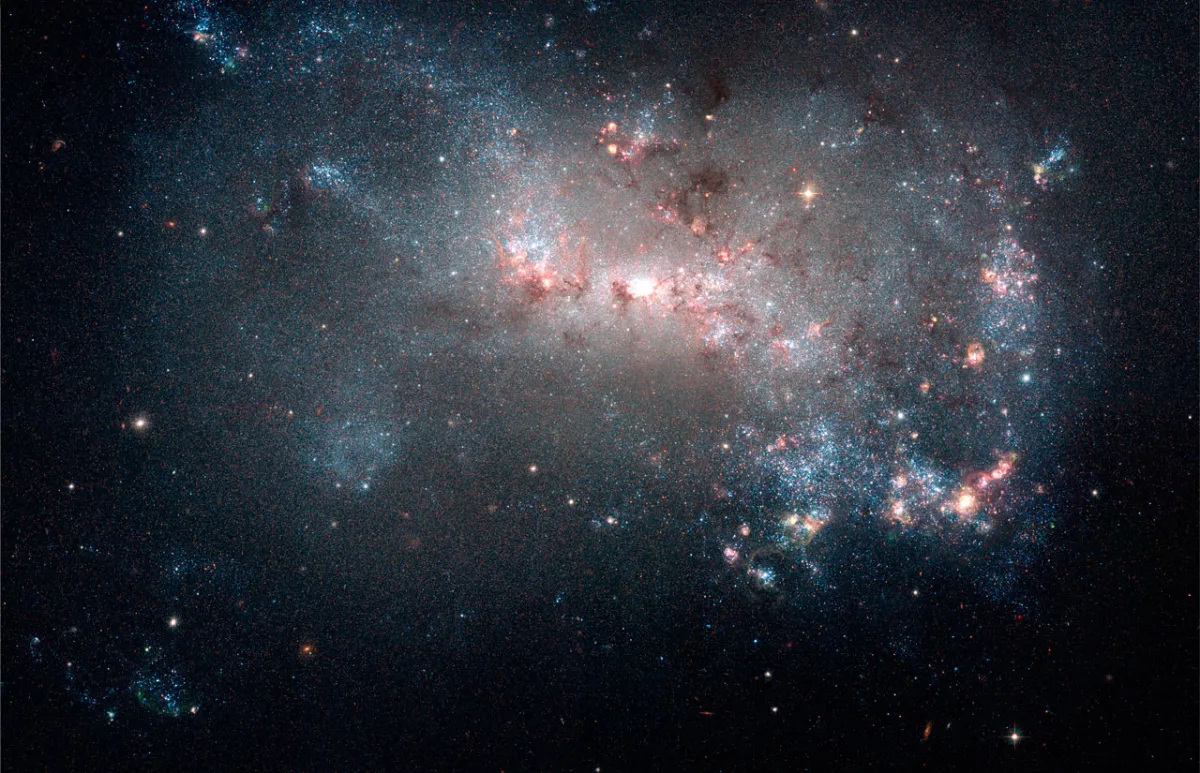Galaxy NGC 4449

History
This galaxy was discovered by William Herschel on 27 April 1788. He cataloged it as «bright nebula» with the designation I 213 and wrote: «very brilliant, considerably large, extended, south preceding, north following, difficulty resolvable has 3 or 4 bright nuclei.» [464] His son John observed the galaxy multiple times from 1828 through 1830. He cataloged it in his «Slough Catalogue» with the number 1281 and described it either as a «fine cluster, well resolved» or as a «double nebula», generally «a fine object.» [466] Dreyer added the galaxy in 1888 as NGC 4449 to his «New General Catalogue». [313]
Physical Properties
NGC 4449 is an irregular dwarf galaxy like the Large Magellanic Cloud and shows intense and widespread star formation activity. Probably interactions with another galaxy kindled the star formation, which untypically reaches all the way out to the galaxy's edge. The bluish-white areas in the Hubble image are populated by vibrant, young, massive, short-living stars and the red areas are H-II regions. The galaxy's size is estimated to 20'000 light-years, only about one-fifth of our Milky Way.[261]
| Designation | NGC 4449 |
| Type | Gx (IBm) |
| Right Ascension (J2000.0) | 12h 28m 11.3s |
| Declination (J2000.0) | +44° 05' 42" |
| Diameter | 6.2 × 4.4 arcmin |
| Photographic (blue) magnitude | 10.0 mag |
| Visual magnitude | 9.6 mag |
| Surface brightness | 13.0 mag·arcmin-2 |
| Position Angle | 45° |
| Redshift (z) | 0.000690 |
| Distance derived from z | 2.91 Mpc |
| Metric Distance | 3.690 Mpc |
| Dreyer Description | vB, cL, mE, D or bifid, rrr, * 9 f 5' |
| Identification, Remarks | WH I 213; h 1281; GC 3002; UGC 7592; MCG 7-26-9; CGCG 216-5 |
Finder Chart
The galaxy NGC 4449 is located in the constellation Canes Venatici. The best season for observation is in the months December to September.
